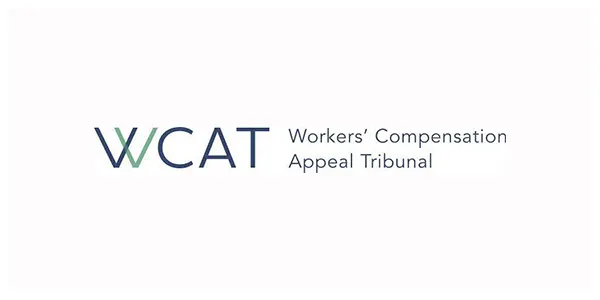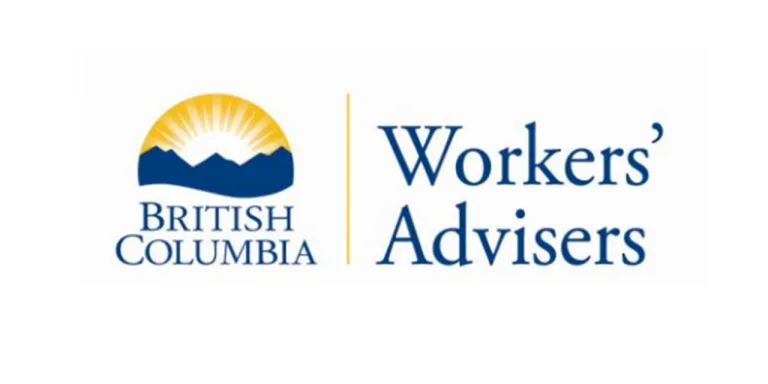
I’m so stressed at work I think I need to take time off. Can I get workers’ compensation?
Getting hurt or ill on the job not only impacts your health, but can leave you without a source of income. That’s where British Columbia’s workers’ compensation program comes in. Learn how the program works, and the steps to make a workers’ compensation claim.
What you should know
“It all happened in an instant. I was scaling the scaffolding at my jobsite, and next thing I knew I was on the ground with a broken leg. I made a claim with WorkSafeBC, and am getting wage-loss benefits until I’m healthy enough to get back to work. I was glad to learn it didn’t matter who was at fault. I think the scaffolding might have given way, but it’s possible I was trying to get up top too quickly.”
– Scott, Prince George, BC

Workers’ compensation is a BC government program that compensates workers who suffer a work-related injury or illness, and provides support for their recovery. The program pays workers for some of their lost income and certain expenses if they suffer a workplace injury or illness — regardless of who was at fault. It can also pay a worker’s family if the worker dies from the injury or illness.
WorkSafeBC is the body that oversees the program under the BC Workers Compensation Act. All employers who hire workers must register in the program. Coverage under the program is funded by premiums paid by employers.
Workers’ compensation also promotes health and safety in the workplace. That includes preventing and addressing bullying and harassment.
The workers’ compensation program covers most workers in British Columbia. That includes workers hired on a full-time, part-time, or casual basis.
Generally, contract workers must register for optional personal coverage if they want protection. However, in some cases an employer may need to pay for a contractor’s coverage. WorkSafeBC explains this in more detail.
Self-employed workers can also register for optional personal coverage.
You can claim for a range of injuries and illnesses
The program covers a wide range of occupational injuries and illnesses, including:
physical injuries, such as a broken bone, burn, or concussion
diseases, such as cancer or a respiratory disease like asbestosis
psychological injuries (the law uses the term mental disorders), such as diagnosed anxiety caused by harassment or some other traumatizing incident at work
If you had a condition that predated the workplace injury, workers’ compensation only covers you for the problems caused specifically by the workplace injury.
The way the injury or illness came about
For your claim to be successful, the injury or illness must have occurred out of and in the course of your employment. You may be entitled to compensation if the injury or illness occurred because of:
an accident, like falling off a ladder at a construction site
exposure to a substance — this includes an infectious agent, like asbestos, or a disease exposure, like being bitten by a rabid dog
natural body movements, like standing up from a chair
a traumatic incident, like bullying or sexual harassment
For more on who’s covered by workers’ compensation, see the WorkSafeBC website.
If you suffer a temporary disability, several types of workers' compensation benefits can come into play.
Wage-loss benefits
Wage-loss benefits compensate workers who lose pay due to a workplace injury or illness. If you qualify, you’ll typically receive 90% of your net wages at the time of your injury or illness. WorkSafeBC provides guidance on how to estimate your benefits rate.
If you’re still unable to work after 10 weeks, you may be eligible for long-term compensation. In this case, your benefits rate is adjusted to take into account your earnings over the past 12 months. The WorkSafeBC website has more information on long-term compensation.
Wage-loss benefits continue until you’re able to return to modified work or your usual job duties.
Health care benefits
Health care benefits cover the cost of health care services and supplies that are considered reasonably necessary to treat your injuries. If WorkSafeBC accepts your claim, these benefits cover:
medical treatments,
hospitalization,
medical supplies (including appliances like crutches and hearing aids, as well as modifications to your home, vehicle or workplace),
rehabilitation (including physiotherapists and chiropractors), and
medication.
WorkSafeBC has more on health care benefits.
Vocational rehabilitation benefits
Sometimes, a workplace injury or illness can affect your ability to return to your previous job. Vocational rehabilitation is a collaborative process that helps you safely transition back to the job you were doing, or something similar.
You work with a consultant who assesses your needs. Together, you develop a rehab plan to help you return to work.
WorkSafeBC has guidance on vocational rehabilitation.
Sometimes a work-related injury or illness results in a permanent disability. Permanent disability benefits compensate you if your disability is likely to impair your future earning capacity.
WorkSafeBC won’t decide on your eligibility until your condition becomes stable. “Stable” means your condition stays the same and medical evidence suggests it’s unlikely to change over the next 12 months.
Permanent functional impairment (PFI) awards are calculated based on your disability rating. This rating is an estimate of how your disability will affect your future earnings. Your disability rating is then multiplied by your long-term wage-loss rate.
Generally, if your monthly payment works out to less than $200, you’ll receive your benefits in a lump sum. Otherwise, you’ll receive your benefits monthly. Even if WorkSafeBC plans to pay you monthly, you can apply for a lump sum payout of all or part of your award.
If you receive a PFI award, you’re also entitled to a retirement benefit. WorkSafeBC sets aside five percent of your award and invests it until you retire. You receive the award once you reach the age of retirement. If you receive a lump sum PFI award, you receive the retirement benefit at the time the award is granted.
WorkSafeBC has more on permanent disability benefits.
WorkSafeBC provides help to those who lose a family member to a work-related accident or illness. The benefits available include:
A monthly pension benefit for the surviving spouse. This benefit continues for the spouse’s lifetime.
A monthly benefit for a dependent child up to age 19. Benefits may continue to age 25 if the child attends post-secondary school.
Funeral benefits.
Grief and vocational counselling for the surviving spouse.
Grief counselling for the surviving children.
See WorkSafeBC’s information on services for families coping with a work-related death.
Getting back to work after you suffer a workplace injury, as soon as it’s safe to do so, can help speed up your recovery. In fact, workers and employers have a legal duty to cooperate with each other and with WorkSafeBC to ensure a timely return to work following an injury.
As part of the duty to cooperate, you and your employer are expected to communicate while you’re injured and off work. As well, your employer must identify suitable tasks and modified job duties to help you reenter the workplace. This may involve coordinating with third parties, like your health care team.
Workers are expected to actively engage in the return to work process. This means you must participate in discussions about suitable work, and tell your employer about the accommodations you need. (Note that this ties into the employer’s duty to accommodate.) You musn’t refuse reasonable work offers that align with your skills and abilities. If you do, WorkSafeBC may reduce or suspend your workers’ compensation benefits.
Your employer may have a duty to maintain your employment
Under BC law, some employers have a legal duty to ensure an injured worker’s job is kept open for their return to work, and that the worker is accommodated if they have restrictions on what they can do. This may include returning the worker to their pre-injury job or a comparable role.
This duty applies to employers where two conditions are met:
the employer regularly employs more than 20 workers, and
the injured worker has been continuously employed by the employer for at least 12 months prior to the date of the injury.
The duty to maintain employment puts an obligation on employers to make changes to the work or workplace to accommodate an injured worker, to the point that it causes them undue hardship. Undue hardship means a situation where the accommodation would be impossible, hinder other workers, or be unreasonably burdensome on the employer. See our guidance on the employer’s duty to accommodate for more on this point.
If you’re fired after returning to work
If your employer fires you within six months of returning to work after an injury, the law assumes they failed to meet the duty to maintain your employment. Your employer can rebut this assumption by showing that your dismissal wasn’t related to your injury.
If you think your employer failed to meet the duty to maintain your employment, you can ask WorkSafeBC to investigate. If WorkSafeBC agrees, they may award you compensation.
See WorkSafeBC’s website for more on returning to work.
If your employer discriminates against you
BC’s human rights laws protect you from discrimination in the workplace. Discrimination is when you experience negative treatment based on a personal characteristic protected by law. If you think you were fired because of your disability, that could be discrimination. See our guidance on discrimination in the workplace for details.
The symptoms of a workplace injury or illness may not cause problems for you right away. In some cases, they may not arise until after you’ve been fired, laid off, or quit your job. Generally, there are two scenarios where this might occur:
You suffer what you consider a minor injury in your job. You shrug it off and don’t report it to your employer. Down the line, your symptoms worsen and you need to seek medical treatment.
You have a chronic condition, like an occupational disease or a cumulative injury, that was caused by previous work. There was no single event that caused the condition. Rather, it developed slowly over time.
In these situations, you aren’t barred from bringing a workers’ compensation claim against your previous employer. That is, as long as you start your claim within one year of discovering the injury or illness.
One challenge in bringing a claim against a previous employer is proving that the injury or illness was caused by your previous job. If you’ve been out of the job for a while, making the connection between your current condition and your previous work duties may be difficult. You’ll need strong medical evidence to establish the connection.
The steps to make a claim
If you suffer a workplace injury or illness, seek medical attention and report it to your employer right away. You have a duty to report an injury or accident. Your employer is responsible for getting you first aid and taking you to a medical facility, if that’s what you need.
Once you report the injury or illness to your employer, make an appointment to see your physician. Your doctor will recommend treatment, and may refer you to other health care practitioners. They may prescribe exercises or activities for you to do at home to help your recovery.
Ask if there are any modified work duties you can continue to safely perform while you recover. And always let your doctor know the injury or illness is work-related.
Ask for a doctor’s note
It’s a good idea to ask your doctor for a note describing your injury. It should say if you need time off (and how much) and explain any restrictions on what you can do at work while you recover.
You should also get in touch with WorkSafeBC as soon as possible. There are three options for reporting to WorkSafeBC:
call Teleclaim at 1-888-WORKERS (1-888-967-5377)
submit your report online with an account or without an account
complete a print application form and mail it to WorkSafeBC
Under the law, you have one year from your accident or the onset of your illness to file a claim. After that, you may lose your right to benefits unless special and exceptional circumstances prevented you from applying on time.
A WorkSafeBC officer will examine your claim and decide if you get benefits, and if so, the type and amount.
The officer may require additional information from you to determine your eligibility. As well, they may require you to attend a medical examination.
Take charge of your rehabilitation
If an injury or illness prevents you from continuing in your job, start to think ahead. Tell WorkSafeBC if you have a particular goal in mind for your rehabilitation. For example, maybe there’s a certain training course you’d like to take. Taking charge of your own rehab process is a good way to ensure a positive outcome.
If WorkSafeBC decides you’re not eligible for benefits, or you don’t understand their decision, ask the officer handling your claim for an explanation. Ask for a decision letter if you didn’t get one. If you’re still not satisfied, you can ask for a review of the decision.
You must request a review within 90 days of the decision on your claim. In special circumstances, you can apply for an extension.
When you ask for a review, WorkSafeBC must provide you with a copy of your claim file. You’ll also receive a letter setting a time to make written submissions. The review division will consider your submissions, together with WorkSafeBC’s file. Typically they have 150 days to come to a decision, though this can be extended.
For more on reviews, including guidance on how to submit a request, see the WorkSafeBC website.
Getting help with your claim
For help with your claim, consider contacting the Workers’ Advisers Office. This is an independent government body, separate from WorkSafeBC. They provide free advice and assistance to workers who disagree with a WorkSafeBC decision. The provincial government website explains how they can help.
Most review decisions can be appealed to the Workers’ Compensation Appeal Tribunal. You must submit your appeal to the tribunal within 30 days of the review division’s decision.
We offer step-by-step guidance on appealing a workers’ compensation decision.
If you think you received unfair treatment
If you feel you’ve been treated unfairly by WorkSafeBC, you can reach out to their Fair Practices Office. WorkSafeBC’s website explains how to raise an issue or complaint with the office.
Who can help

WorkSafeBC
Runs the workers’ compensation program in British Columbia.

Workers’ Compensation Appeal Tribunal
Hears appeals of review decisions made by WorkSafeBC.

Workers’ Advisers Office
A government office that helps workers with claims for workers’ compensation benefits. They are separate from WorkSafeBC and there’s no charge for their services.


